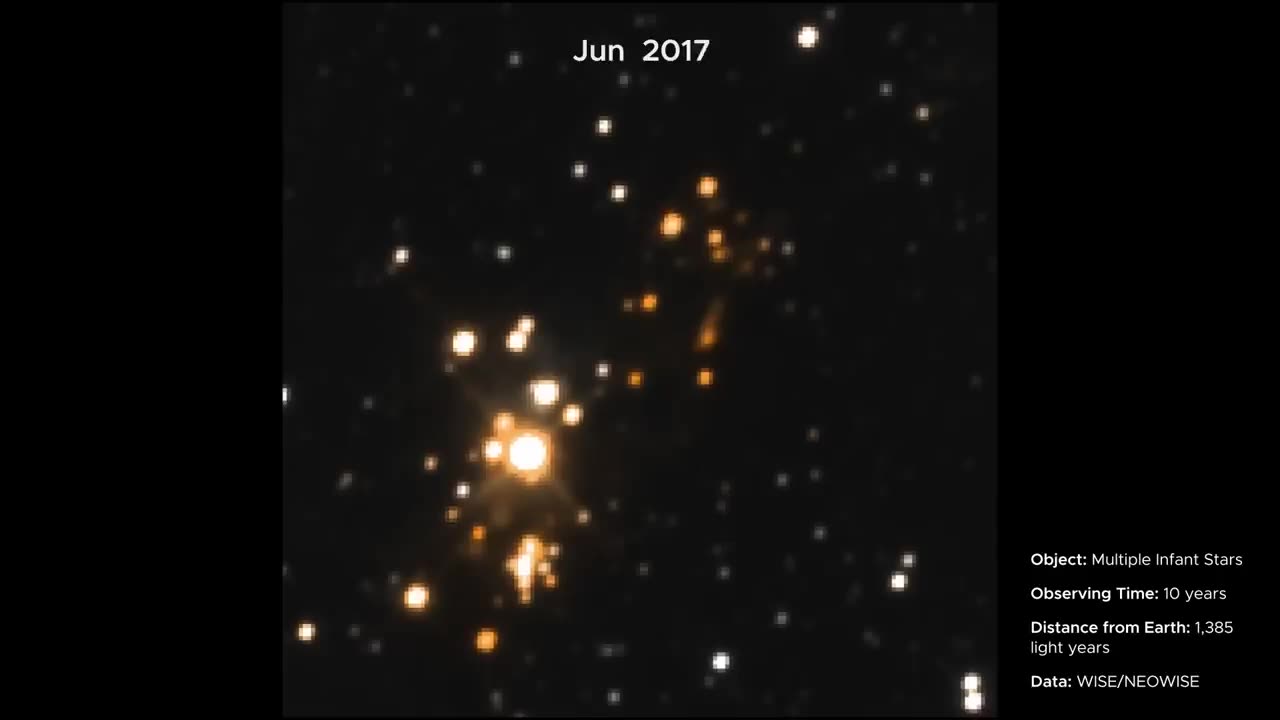Premium Only Content

NEOWISE_ Revealing Changes in the Universe
.The universe is a dynamic and ever-changing place, with a wide range of processes and phenomena occurring on various scales. Here are some of the notable changes and events that occur in the universe:
Stellar Evolution: Stars go through various stages of evolution, starting from their formation in stellar nurseries, followed by nuclear fusion in their cores, and eventually leading to processes like supernovae, which mark the explosive end of massive stars.
Galactic Collisions and Mergers: Galaxies can collide and merge over billions of years, leading to the formation of new galaxies and the transformation of existing ones. These interactions can trigger star formation and influence the distribution of matter.
Black Hole Dynamics: Black holes, formed from the remnants of massive stars, can grow in size by accreting matter from their surroundings. Their gravitational effects can shape the surrounding space and influence nearby objects.
Cosmic Expansion: The universe itself is expanding, causing galaxies to move away from each other. This expansion was initially discovered through the observation of redshifted light from distant galaxies.
Dark Energy and Dark Matter: The presence of dark energy, a mysterious force driving the accelerated expansion of the universe, and dark matter, an invisible form of matter that interacts only through gravity, are significant drivers of cosmic change and evolution.
Supernovae and Stellar Explosions: Supernovae are powerful explosions that occur when massive stars reach the end of their lives. They release tremendous energy and play a crucial role in distributing heavy elements throughout the cosmos.
Cosmic Microwave Background Radiation: This is the afterglow of the Big Bang and provides valuable insights into the early universe's conditions and evolution.
Formation of Planets and Solar Systems: Planets and solar systems form from rotating clouds of gas and dust around young stars. These processes involve the coalescence of particles and the accretion of material.
Gamma-Ray Bursts: These intense bursts of gamma-ray radiation are associated with energetic astrophysical events, such as the collapse of massive stars or the collision of neutron stars.
-
 DVR
DVR
Flyover Conservatives
21 hours agoLeft for Dead: The Dark Secrets Behind Clinical Trials Exposed - Brianne Dressen, React19 | FOC Show
7.02K -
 5:28:19
5:28:19
Wahzdee
8 hours agoAm I Too Old to Keep Up? New Game? 🤔🎮 - Warzone/Kompete Days! S1E13
32.5K2 -
 1:08:07
1:08:07
Josh Pate's College Football Show
3 hours ago $1.22 earnedNational Title Prediction | Clemson’s Big Moves | CFB’s Golden Age | USC Childhood Hatred
16.4K -
 1:00:57
1:00:57
The StoneZONE with Roger Stone
2 hours agoShould Trump Pardon Corrupt Mayor Eric Adams? | The StoneZONE w/ Roger Stone
11.2K6 -
 DVR
DVR
SwitzerlandPlayIT
4 hours ago🔴 LIVE - RANDOM GAMING - Kingdom of Amalur?
32K2 -
 31:50
31:50
Standpoint with Gabe Groisman
1 day agoEp. 64. Canada: the 51st State?!
24.3K7 -
 57:28
57:28
Sarah Westall
4 hours agoCabal Loses Control, Crackdown Back Fires & Day of Reckoning Coming w/ Sam Anthony
51.8K9 -
 1:10:22
1:10:22
Edge of Wonder
4 hours agoDreams & Laser Experiments Prove the Matrix Code Is Real
20.3K1 -
 1:18:05
1:18:05
Redacted News
7 hours agoBREAKING! BIDEN'S MASSIVE MIDDLE FINGER TO AMERICANS, TRUMP AND PUTIN PLAN PEACE TALKS | Redacted
111K229 -
 2:00:11
2:00:11
vivafrei
6 hours agoHegsetnh Confirmation Hearings Recap; Jack Smith Report Recap! La Fires Recap & MORE!
111K73